Noisy Turbo

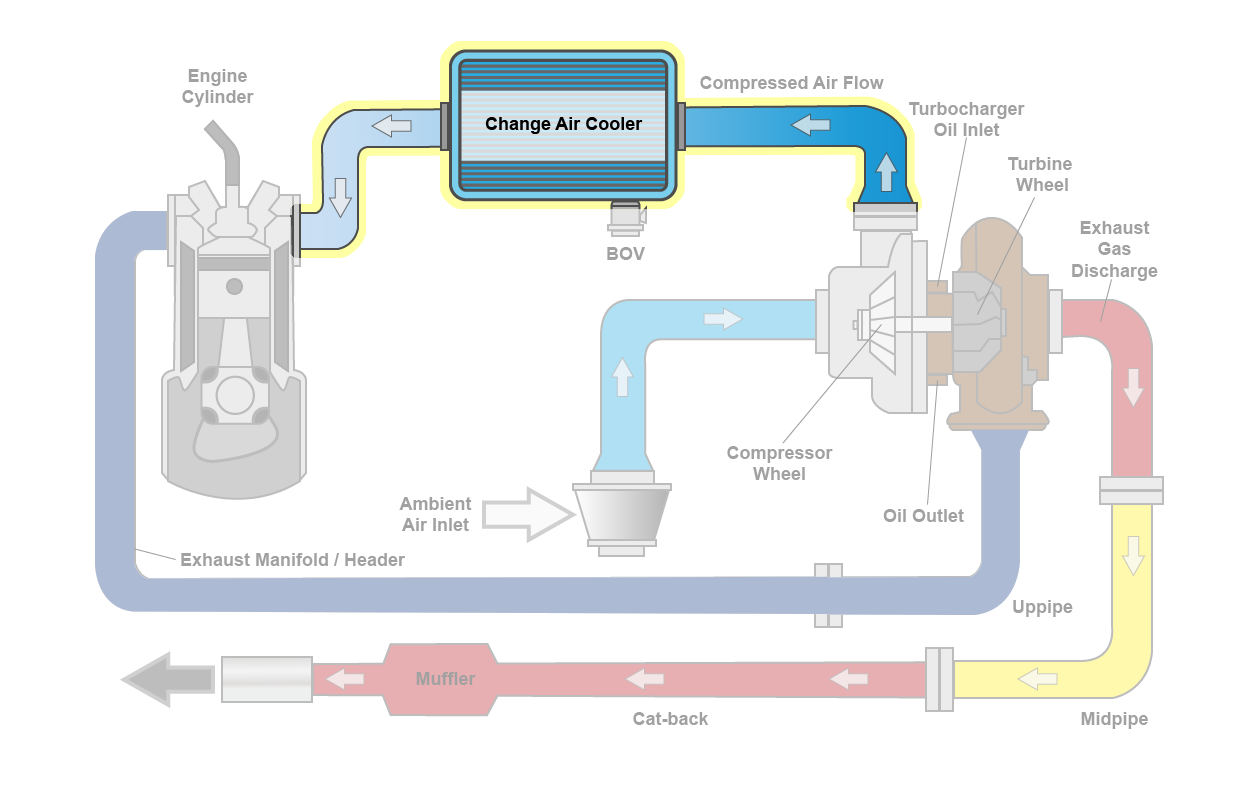
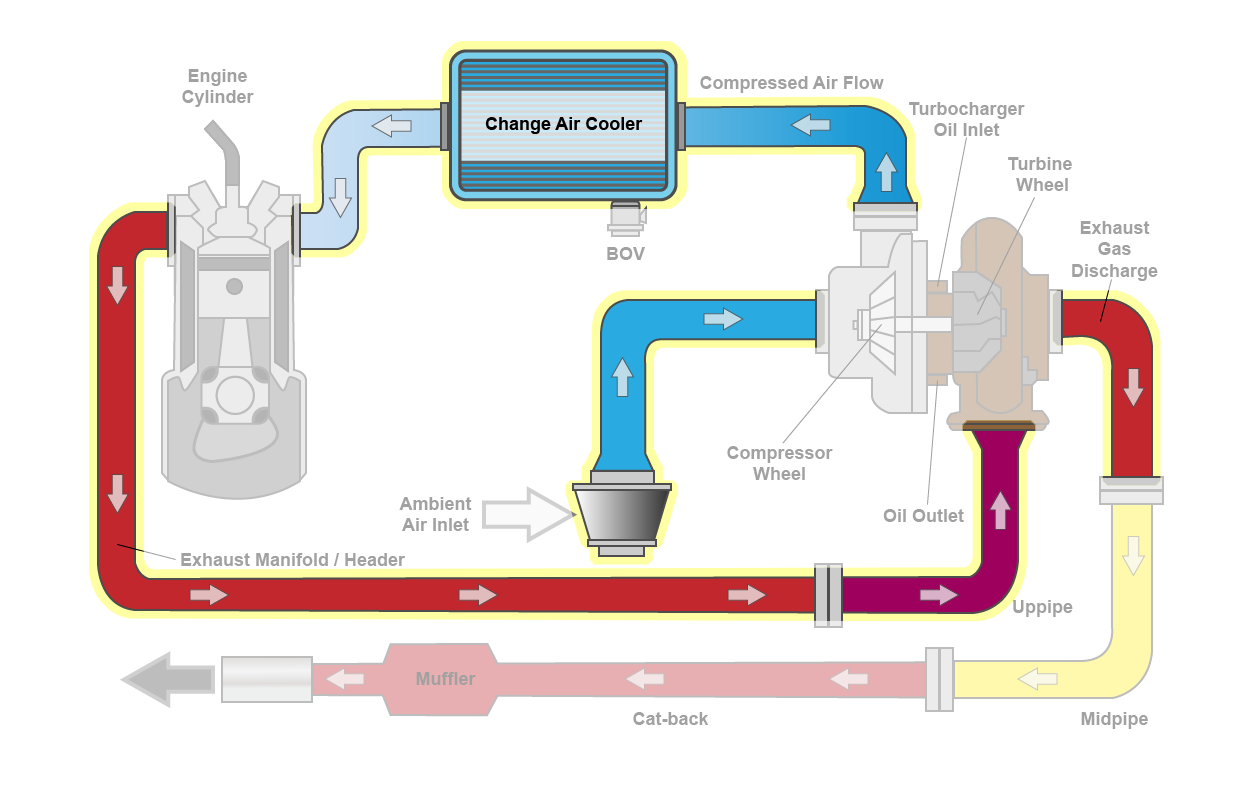
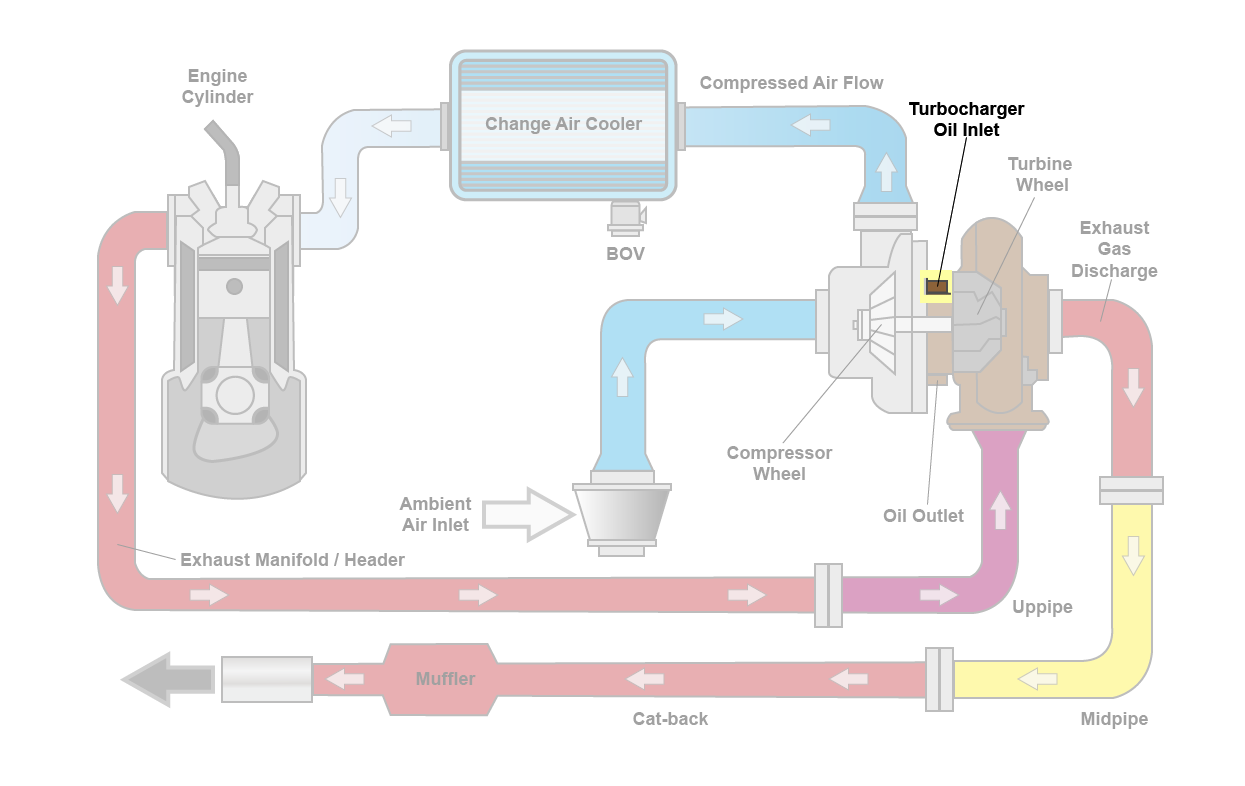
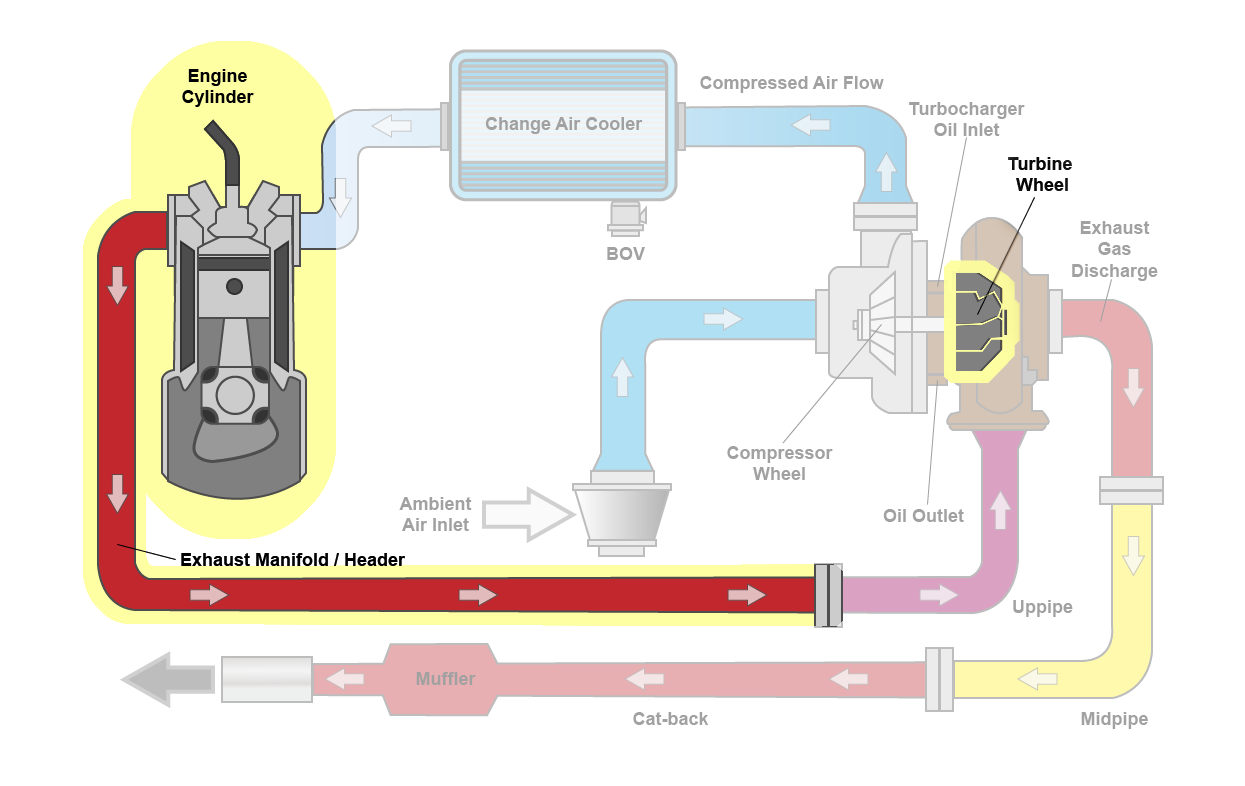
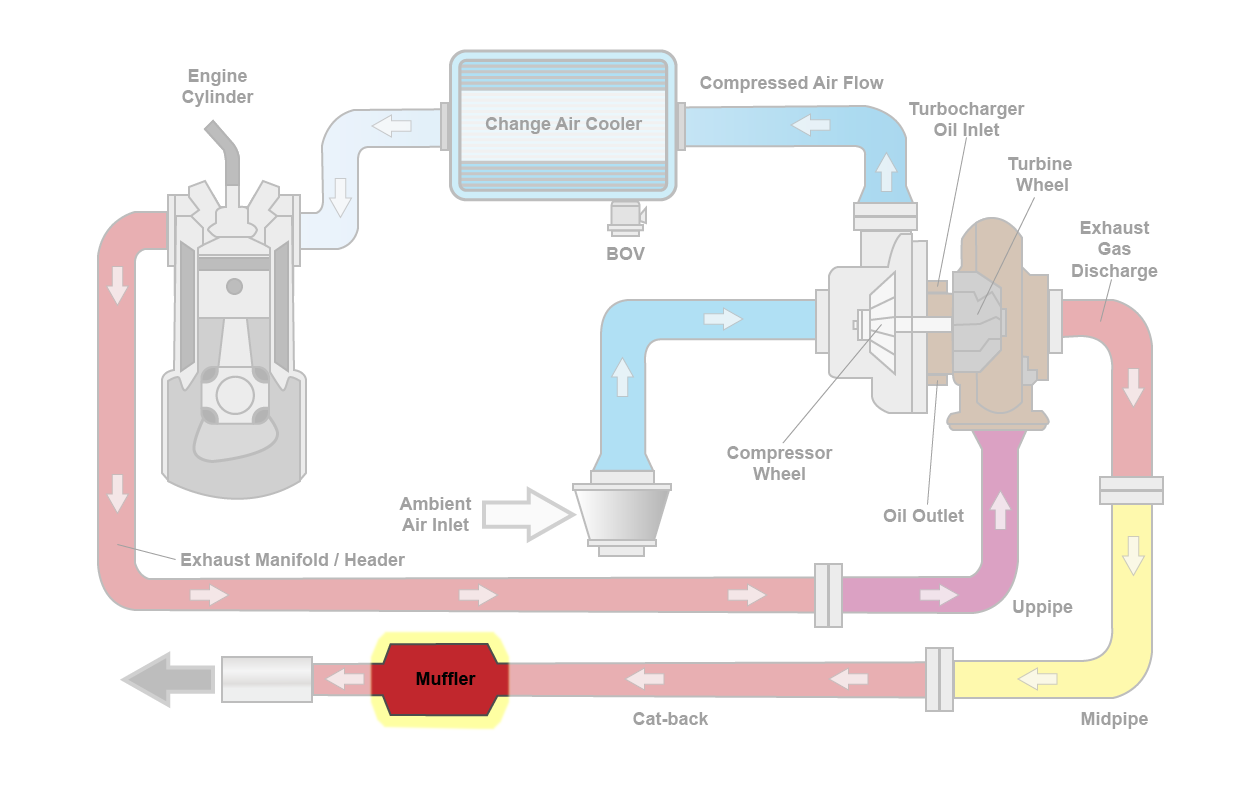
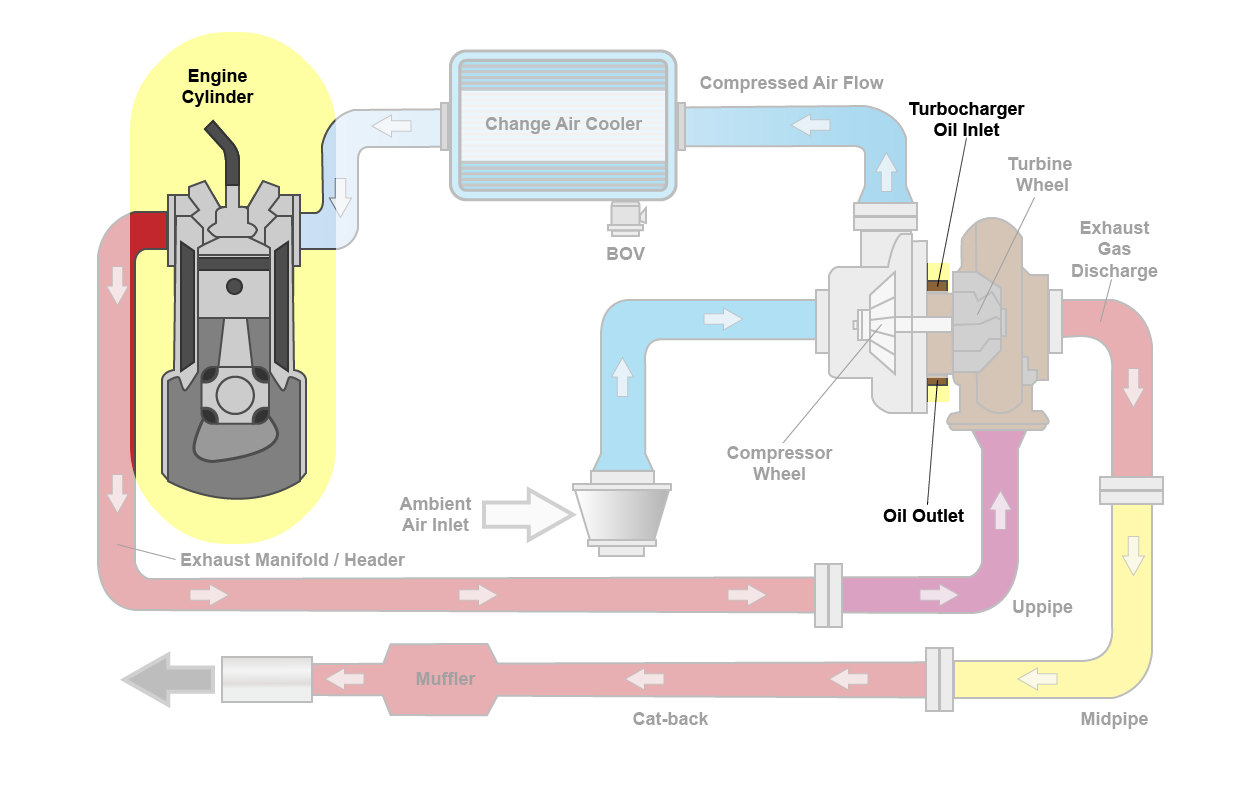
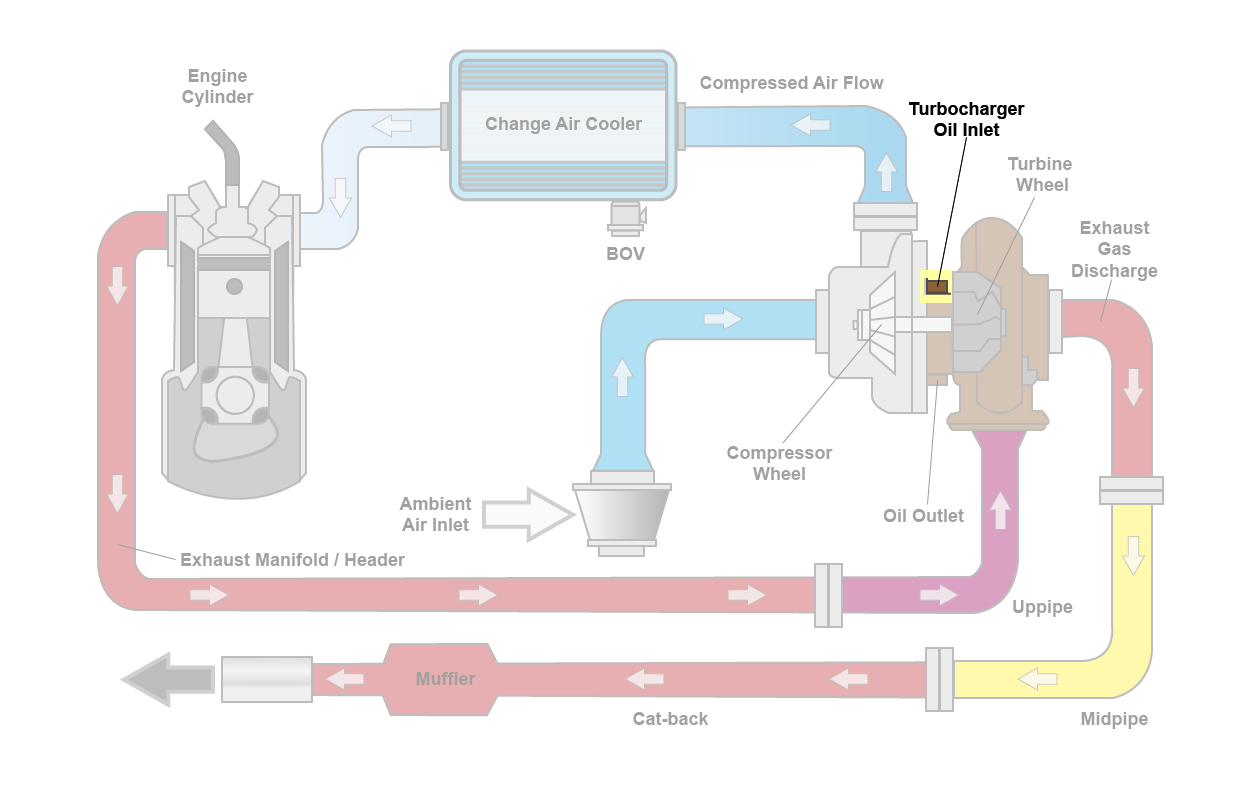
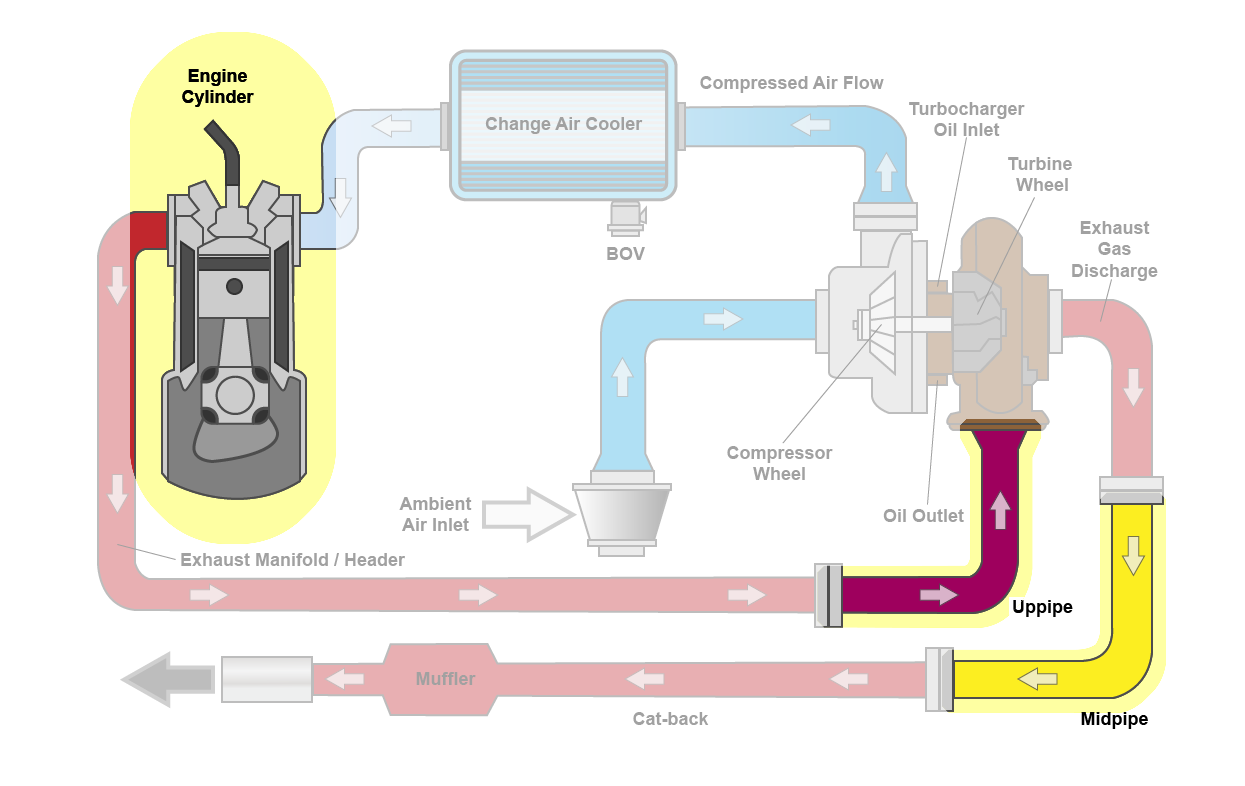
Dirt or debris in the compressor housing
Air leaks in ducting or hoses
Clogged or restricted ducting
Insufficient Lubrication for Turbocharger
Exhaust Manifold leaking
Severe Exhaust restriction
Oil contamination
Failure to Pre-Lubricate Turbocharger at installation and per instructions
Turbocharger Mounting
Turbocharger Housing
1) Remove air intake duct from turbo and inspect inside the wheel vane area for foreign material such as metal or hardware, air filtration material, leaves or dirt. Clean accordingly.
2) Review vanes on compressor wheel for worn or damaged tips. If damaged replace turbo.
2) Use a commercial grade smoker to assist or run the vehicle creating a pressurized system, then spray a water and dish soap solution on connections, ducting and charger cooler interfaces. Leaks will show via soap bubbles created.
1) Inspect ducting for bending, collapsing, rust or deterioration. Remove ducting and inspect internally for oil or material restriction. Repair and replace as needed.
2) Clogged charge air coolers can be reviewed with thermal evaluation guns across the cooler face. Temperature should drop from compressed air flow ducting across the charger cooler into the exiting ducting. Pressure should remain the same at the entry and exit of the cooler.
Inspect exhaust manifold for cracks or damage and leaking gaskets.
1) Excessive carbon build up, mixed soot or oil due to engine or turbo failure.
2) Review for incorrect exhaust pipe diameter.
3) Clogged muffler or DPF filter (DPF filter issues are a main concern on Dodge / Cummins 6.7L)